Ask any child of the ’80s about their Saturday morning routine, and you’ll hear tales of cereal-fueled cartoon marathons that dominated our young lives. What many of us didn’t realize then—but fully acknowledge now with a mixture of nostalgia and amusement—is that many of our beloved shows existed primarily to sell toys. When the FCC deregulated children’s television in 1984 under the Reagan administration, the floodgates opened for what were essentially 22-minute commercials disguised as entertainment. Yet somehow, we didn’t mind one bit—these shows captured our imaginations and, yes, our allowance money too.
1. He-Man and the Masters of the Universe (1983-1985)
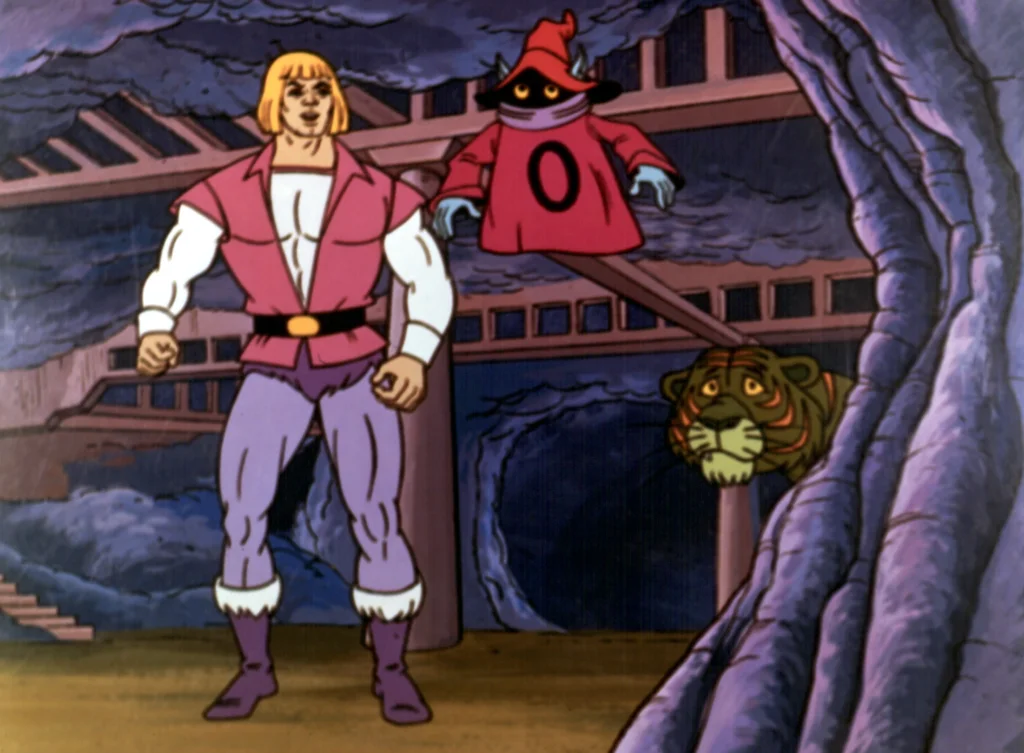
Before a single episode ever aired, Mattel had already developed the musclebound action figure line that would become a cultural phenomenon. The show introduced us to Prince Adam, who would transform into the mighty He-Man to defend Castle Grayskull against the evil Skeletor, all while conveniently showcasing a rotating cast of characters that corresponded precisely with new action figures hitting store shelves. Each episode seemed to introduce another character who, coincidentally, was available for $4.99 at your local toy store. SYFY offers an oral history of this franchise that captivated so many.
The show’s success spawned an empire that included more than 70 action figures, playsets like Castle Grayskull and Snake Mountain, and countless accessories that dominated birthday and holiday wish lists nationwide. Despite the obvious commercial intentions, the show gave us genuinely memorable catchphrases (“By the power of Grayskull!”) and surprisingly positive messages about cooperation and responsibility woven between the battles. Parents may have grumbled about the transparent marketing, but for kids, owning a piece of Eternia made the fantasy world feel that much more real—which was exactly what Mattel was counting on.
2. G.I. Joe: A Real American Hero (1983-1986)
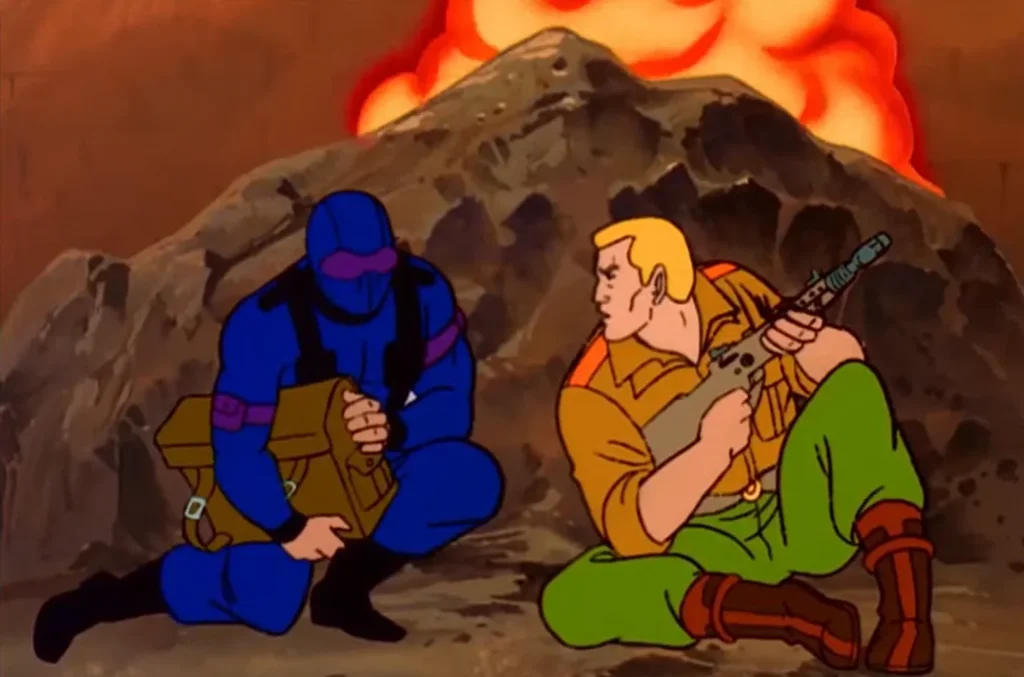
“Now you know, and knowing is half the battle!” became the patriotic sign-off to every episode of this military-themed action show that revitalized Hasbro’s 12-inch action figure brand by shrinking the toys to 3.75 inches and expanding the universe exponentially. The cartoon featured an impossibly large roster of specialized soldiers with names like Snake Eyes, Scarlett, and Duke battling the terrorist organization Cobra, led by the appropriately named Cobra Commander. Each new episode seemingly introduced another specialist whose particular skills were needed for that mission—and whose action figure awaited purchase. Indeed, History credits this patriotic, muscled hero with jumpstarting the action figure movement.
What made G.I. Joe particularly effective as a marketing tool was how each character had distinct personalities, backgrounds, and specialties detailed on the file cards packaged with the toys, creating a collectible aspect that encouraged completionism. The show’s PSA segments at the end of each episode—covering everything from fire safety to stranger danger—gave parents just enough of a veneer of educational content to justify the purchase of yet another action figure. Looking back, the show’s animation was often stiff and the plots repetitive, but the intricate world-building and character development created a universe that felt worth investing in—both emotionally and financially.
3. Transformers (1984-1987)
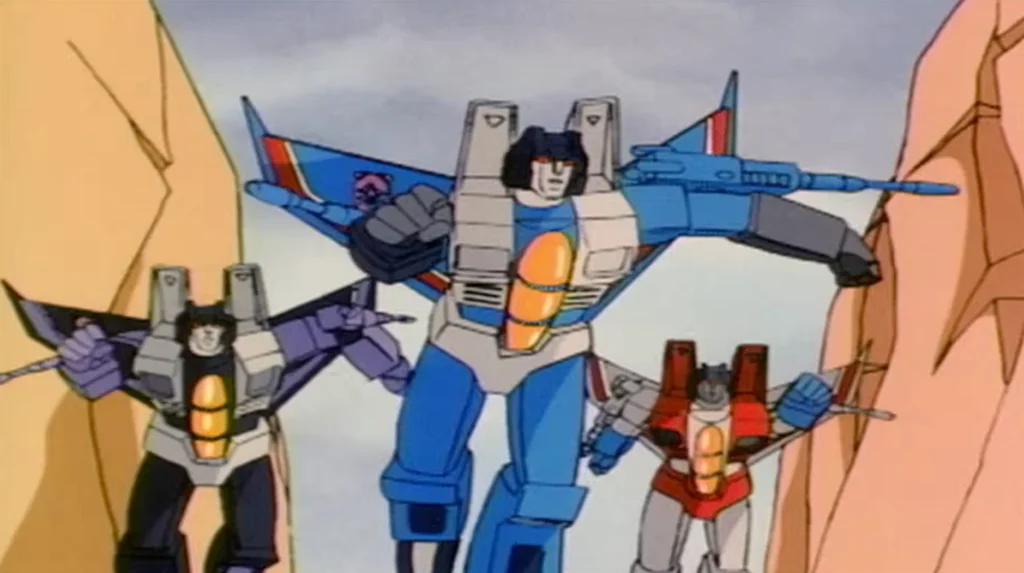
“Robots in disguise” wasn’t just a tagline—it was a brilliant marketing strategy that essentially doubled the play value of each toy in Hasbro’s revolutionary line of morphing robots. The animated series chronicled the battle between the heroic Autobots and evil Decepticons, alien robots who transformed into vehicles, weapons, and electronics while waging their ancient war on Earth. Each episode conveniently showcased numerous transformation sequences that served as virtual demonstrations of how the toys worked, often lingering on new characters whose figures had just been released. Museum of Play unpacks the grand history of this franchise that continues to wow fans to this day in transformative ways.
The genius of Transformers’ marketing was creating two toy experiences in one package—a vehicle and a robot—while building a surprisingly complex mythology around the characters. Kids debated whether Optimus Prime or Megatron was more powerful and which Transformer had the coolest alt-mode, discussions that inevitably led to begging for new additions to their collections. The 1986 animated movie famously killed off numerous characters (including beloved leader Optimus Prime) primarily to phase out older toy lines and introduce a new generation of characters for purchase—perhaps the most nakedly commercial move in children’s entertainment history, yet one that’s now regarded with nostalgic reverence by fans.
4. My Little Pony (1986-1987)
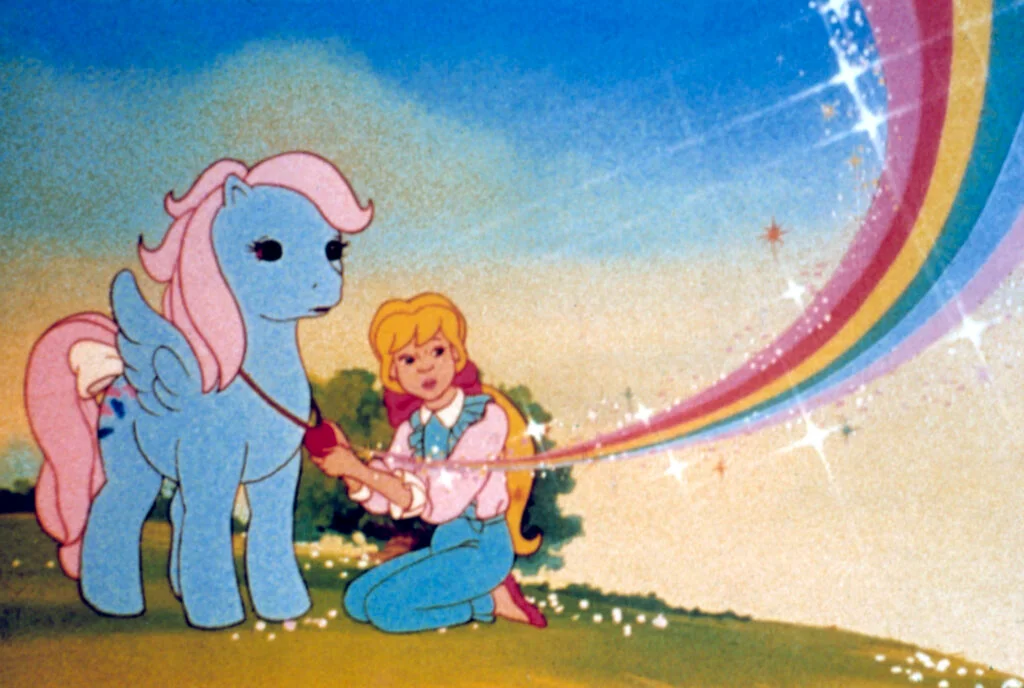
Behind the pastel colors and saccharine adventures in Ponyland lay Hasbro’s masterful marketing to young girls, creating a collectible empire built on distinctive color schemes and cutie marks. Each episode featured ponies with names like Twilight, Firefly, and Glory embarking on magical adventures that just happened to showcase their unique personalities—personalities conveniently matched to the plastic ponies lining store shelves. The show established clear character traits for each pony, making children feel they “needed” specific characters to complete their imaginary scenarios.
The marketing genius extended to endless variants (Earth Ponies, Unicorns, Pegasi, Sea Ponies) and themed releases tied to seasons and holidays, creating a perpetual cycle of “new” ponies to collect. The deliberately gentle storytelling reassured parents while the show’s emphasis on friendship and caring created positive associations with the brand that made the toys seem more valuable than mere plastic figurines. By expanding to playsets like Paradise Estate and the Show Stable, Hasbro ensured that the initial pony purchase was just the gateway to an ever-growing collection—a strategy that helped sell over 150 million ponies by 1987.
5. Care Bears (1985-1988)

What began as greeting card characters transformed into a marketing juggernaut when Kenner realized the potential of fuzzy bears with symbols on their tummies. The animated series sent the Bears from their cloud-city home of Care-a-Lot down to Earth to help children overcome problems, with each episode showcasing various Bears using their unique “Care Bear Stare” powers—powers conveniently associated with specific bears whose plush versions waited in toy stores. The rotating cast ensured that children were exposed to the entire line of products, from Tenderheart Bear to Grumpy Bear and beyond.
The brilliance of the Care Bears marketing strategy was its expansion beyond just toys to become a lifestyle brand encompassing bedding, clothing, school supplies, and more, allowing children to surround themselves with these characters. Parents appreciated the show’s focus on emotional intelligence and problem-solving, never realizing they were being maneuvered into purchasing an ever-growing rainbow of bears, cousins (non-bear characters), and accessories. The Care Bear movies further cemented the characters in popular culture, creating sustained demand for the plush toys that continues with periodic revivals decades later.
6. ThunderCats (1985-1989)
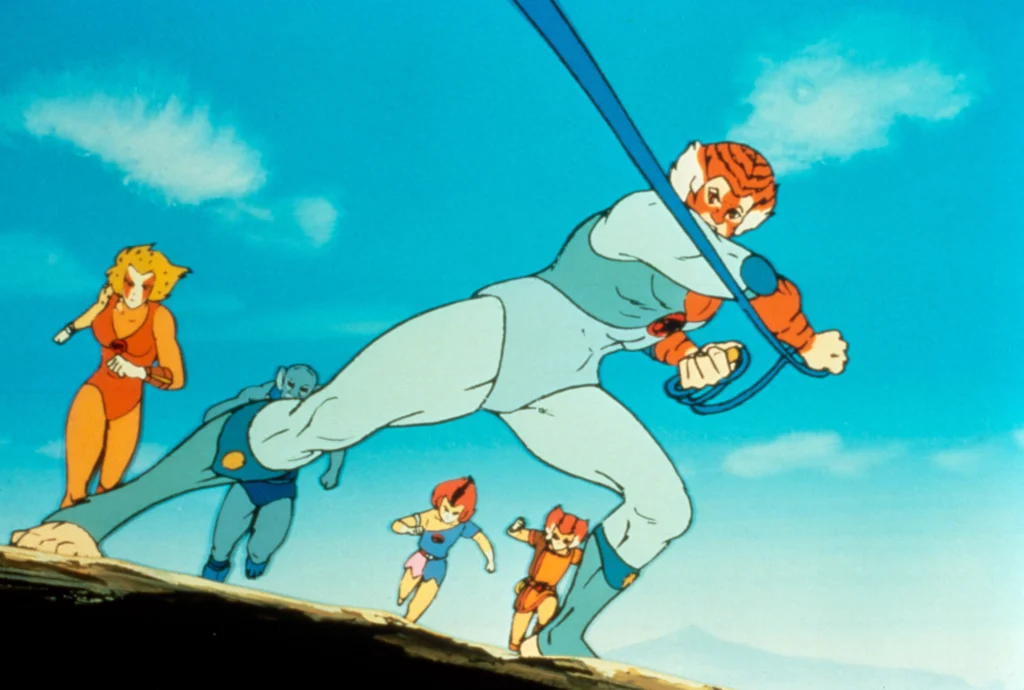
“ThunderCats, Ho!” echoed through living rooms as children watched a group of humanoid cat aliens battle the evil forces of Mumm-Ra on Third Earth. The LJN toy line featured action figures with impressive details for the era, including Lion-O’s light-up “Sword of Omens” and Panthro’s nunchucks. Each ThunderCat had distinctive weapons, vehicles, and abilities that the show meticulously showcased in action sequences that served as virtual toy demonstrations, often introducing new characters just as their action figures reached stores.
What made ThunderCats particularly effective as a marketing vehicle was its world-building that included not just the core team but numerous allies, enemies, and civilizations—all with merchandise potential. The show’s premise allowed for an endless array of new characters and vehicles that kept the toy line fresh while maintaining the core collectible appeal. Looking back, the animation quality was actually superior to many contemporaries, and the storylines featured surprisingly mature themes about belonging and prejudice—just enough substance to disguise the commercial intent while creating genuine emotional attachment to characters we were then desperate to own in plastic form.
7. Teenage Mutant Ninja Turtles (1987-1996)
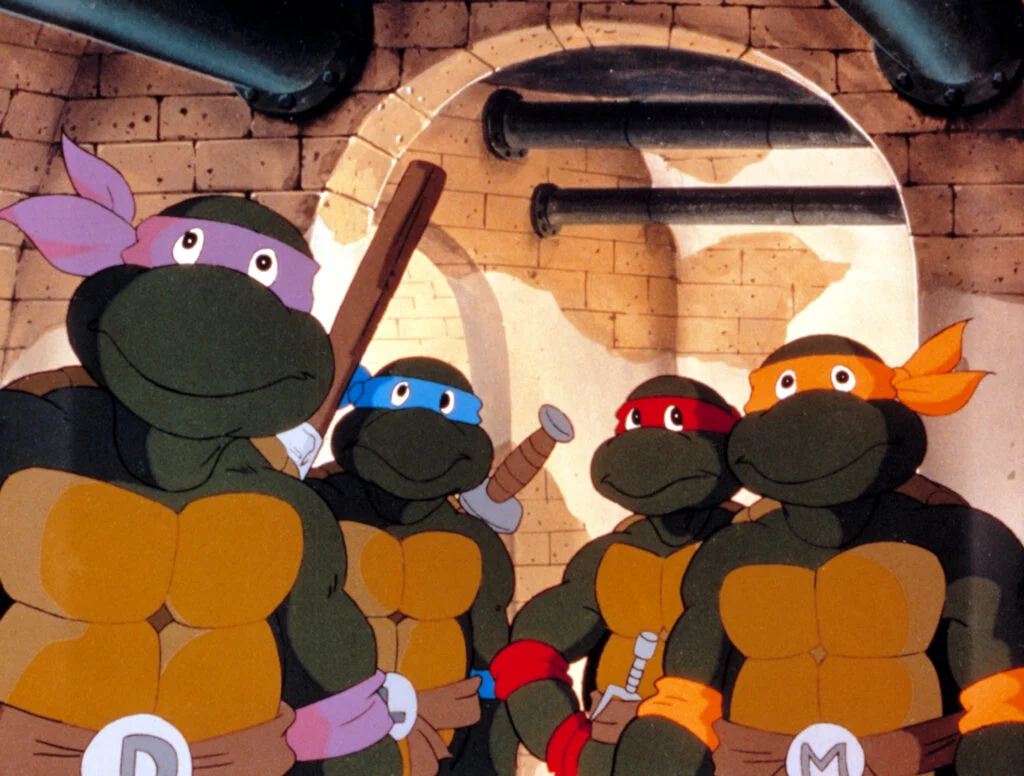
What began as a gritty black-and-white comic parody transformed into a pizza-loving, “Cowabunga”-shouting phenomenon when Playmates Toys secured the license and collaborated on a kid-friendly animated series. The show followed four mutant turtles—Leonardo, Donatello, Michelangelo, and Raphael—trained in ninjutsu by their rat sensei Splinter, battling the evil Shredder and his Foot Clan. The genius of the marketing was how each turtle had a distinct personality, favorite weapon, and catchphrases that made owning just one turtle seem insufficient—you needed the complete team.
The TMNT toy line expanded at a staggering pace, introducing mutant allies, bizarre villains, and increasingly specialized versions of the core turtles (Surfer Mike! Punker Don!) that bore little relationship to the show’s plotlines but created perpetual “newness” in the toy aisles. The merchandising expanded to virtually every product imaginable—from breakfast cereal to bed sheets—creating complete market saturation that kept the turtles perpetually top-of-mind for children. Despite the nakedly commercial approach, the show’s humor, distinctive animation style, and genuinely entertaining stories created a franchise that transcended its toy commercial origins to become a cultural touchstone that continues to reinvent itself for new generations.
8. Rainbow Brite (1984-1986)
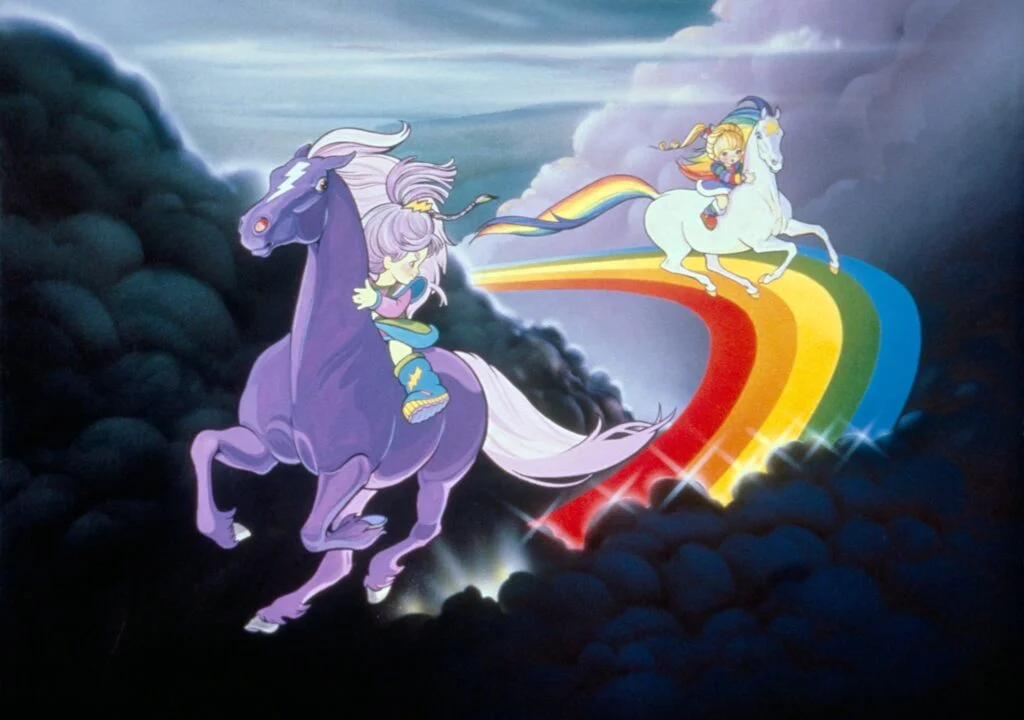
This Hallmark-created character leapt from greeting cards to television in a show chronicling the adventures of a young girl named Wisp (Rainbow Brite) who brought color to a formerly gray world with the help of Sprite friends and her horse Starlite. Each of Rainbow’s companions represented a different color and had special powers related to their hue—a perfect setup for collecting the complete rainbow of character dolls produced by Mattel. Episodes conveniently featured color-themed plotlines that showcased specific characters newly available in toy departments.
What made Rainbow Brite particularly effective as marketing was how it combined the color-collecting aspect (encouraging completionist purchasing) with a fantasy world that featured multiple play opportunities through playsets like the Color Castle. The character designs emphasized distinctive hair, outfits, and accessories that translated well to dolls and were easily recognizable on licensed products. Parents approved of the colorful, positive messaging while children formed emotional connections to specific color characters—ensuring they’d request not just Rainbow herself but her entire spectrum of friends, their sprites, and the accompanying playsets and vehicles.
9. Strawberry Shortcake (1980-1985)
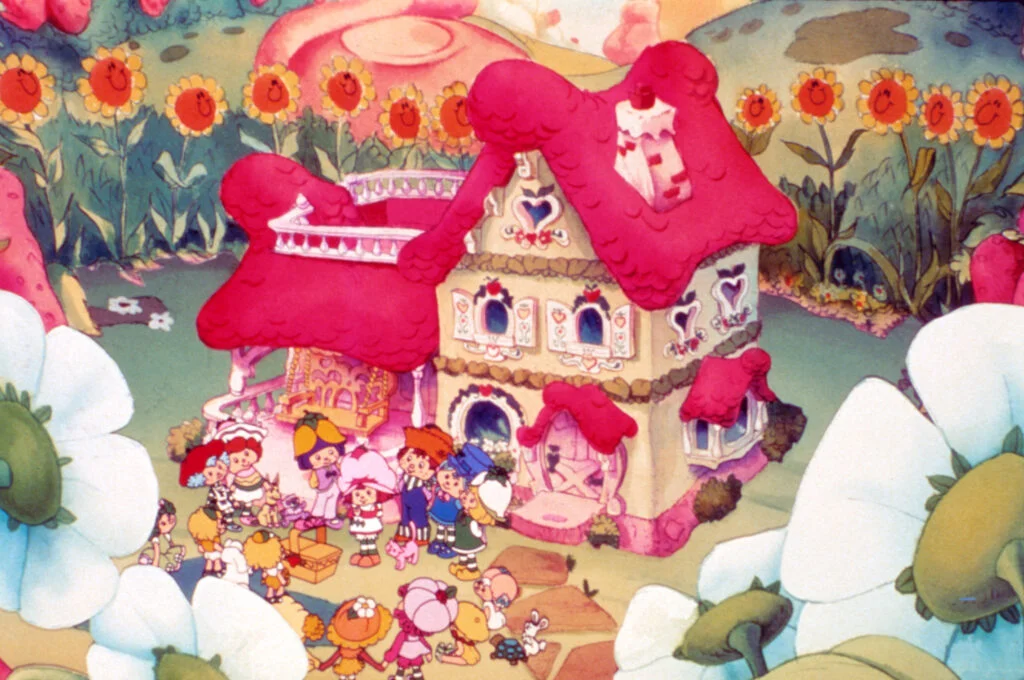
The sweet-smelling world of Strawberry Shortcake began as American Greetings cards before Kenner transformed it into a scented empire anchored by a cartoon series. The show featured Strawberry and her friends—all named after desserts and fruits—having gentle adventures in Strawberryland. Each character had a distinctive look, personality, and fruity scent, with the toys emitting matching artificial fragrances that created a multi-sensory marketing experience unprecedented in children’s entertainment. New episodes frequently introduced characters who, coincidentally, had just arrived on store shelves.
The Strawberry Shortcake marketing strategy was brilliantly comprehensive, expanding beyond dolls to playsets like the Berry Happy Home and the Berry Bake Shoppe that created additional play scenarios featured in the animated specials. The show’s emphasis on friendship and dessert imagery made it irresistible to young audiences while creating easy gift ideas for adults who might not know what specific character a child wanted but recognized the distinctive pink and green packaging. By continually introducing new scented friends (eventually spanning fruits, berries, and desserts of all kinds), the brand ensured that collections remained perpetually incomplete, driving sustained sales through the decade.
10. Jem and the Holograms (1985-1988)

“Truly outrageous” wasn’t just Jem’s catchphrase—it described Hasbro’s ambitious attempt to compete with Barbie through a rock star doll with a secret identity. The animated series followed Jerrica Benton who transformed into pink-haired rock star Jem using holographic projections, fronting the band The Holograms while battling rival bands The Misfits and later The Stingers. The show’s unique music video segments showcased different outfits and accessories available for the dolls, while the rotating supporting cast ensured exposure to the complete product line.
What distinguished Jem as a marketing vehicle was its aspirational appeal combining fashion dolls with music and technology themes—plus the added value of getting two characters (Jerrica and Jem) in one doll through switchable wigs and outfits. The show’s storylines about the music industry, romance, and friendship were surprisingly mature for the era, creating a slightly older target demographic than many competitors. While the dolls never achieved Barbie-level success, the show’s sophisticated animation, original songs for each episode, and complex character dynamics created a cult following that far outlasted the toy line—proving that sometimes quality entertainment emerges even from the most commercial origins.
11. She-Ra: Princess of Power (1985-1986)
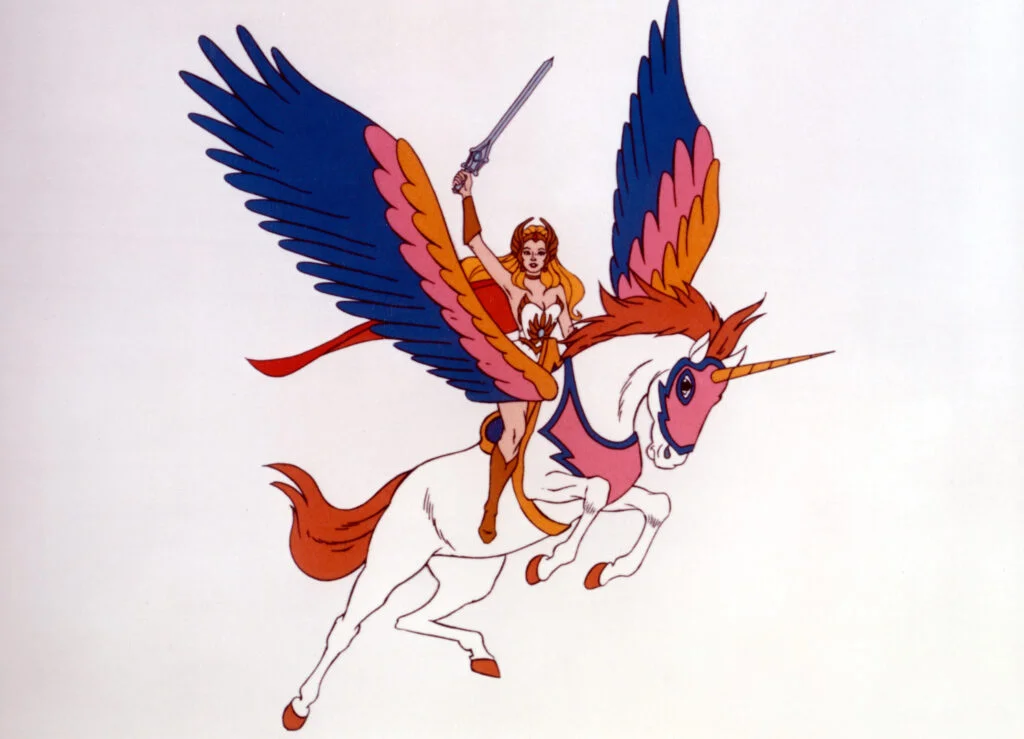
After He-Man’s success with boys, Mattel shrewdly expanded their Eternia universe to capture the girls’ market with He-Man’s long-lost twin sister Princess Adora, who transformed into She-Ra to battle the evil Hordak on the planet Etheria. The show followed the same template as its predecessor—showcasing a wide range of characters with unique powers and accessories that corresponded precisely with the toy line. Each episode conveniently featured different members of the Great Rebellion whose action figures awaited purchase.
The She-Ra marketing approach was particularly clever in how it connected to the established He-Man universe while creating its own distinctive world, encouraging cross-purchasing between lines while maintaining separate identity. The toys emphasized the “princess” aspect with more colorful designs, flowing hair, and sparkling accessories that differentiated them from the masculine He-Man line. Despite the obvious commercial intent, the show gained respect for featuring a female-led cast of strong, independent characters who solved their own problems—a relative rarity in 1980s children’s programming that helped justify the toy purchases to progressive parents while still delivering the fantasy elements children craved.
12. Silverhawks (1986)

From the same producers as ThunderCats came another Rankin/Bass attempt to replicate their success with metallic space heroes. The show featured a team of human law enforcers transformed into “partly metal, partly real” cyborgs with bird-like powers and metallic bodies, battling space gangster Mon*Star and his minions. Each team member had distinctive powers, weapons, and bird themes that translated directly to Kenner’s action figure line. Episodes methodically showcased each character’s special abilities in scenes that functioned as mini toy demonstrations.
The Silverhawks toy line was particularly notable for its metallic finish and wing mechanisms that matched the show’s aesthetic, creating a distinctive presence on toy shelves. While the series lasted just one season, its memorable theme song (“Silverhawks, partly metal, partly real!”) and distinctive visual design helped move enough merchandise to be considered a modest success despite living in ThunderCats’ shadow. The show’s space setting allowed for an endless array of vehicles and playsets with light-up features that showcased the era’s toy technology capabilities—even if the underlying purpose remained selling toys to children captivated by the metallic heroes and their bird-like powers.
Looking back on these shows decades later brings a mixture of amusement and affection. Yes, they were essentially commercials—some more blatant than others—but they also sparked our imaginations in ways that transcended their commercial origins. We didn’t just buy the toys; we inhabited these worlds, creating stories that went far beyond the 22-minute episodes. Perhaps that’s why these franchises continue to be revived for new generations: beneath the transparent marketing lay genuinely appealing characters and universes that resonated with something fundamental in childhood imagination. We knew they wanted our allowance money—we just didn’t care because the fantasies they sold were worth every penny to our young minds.


